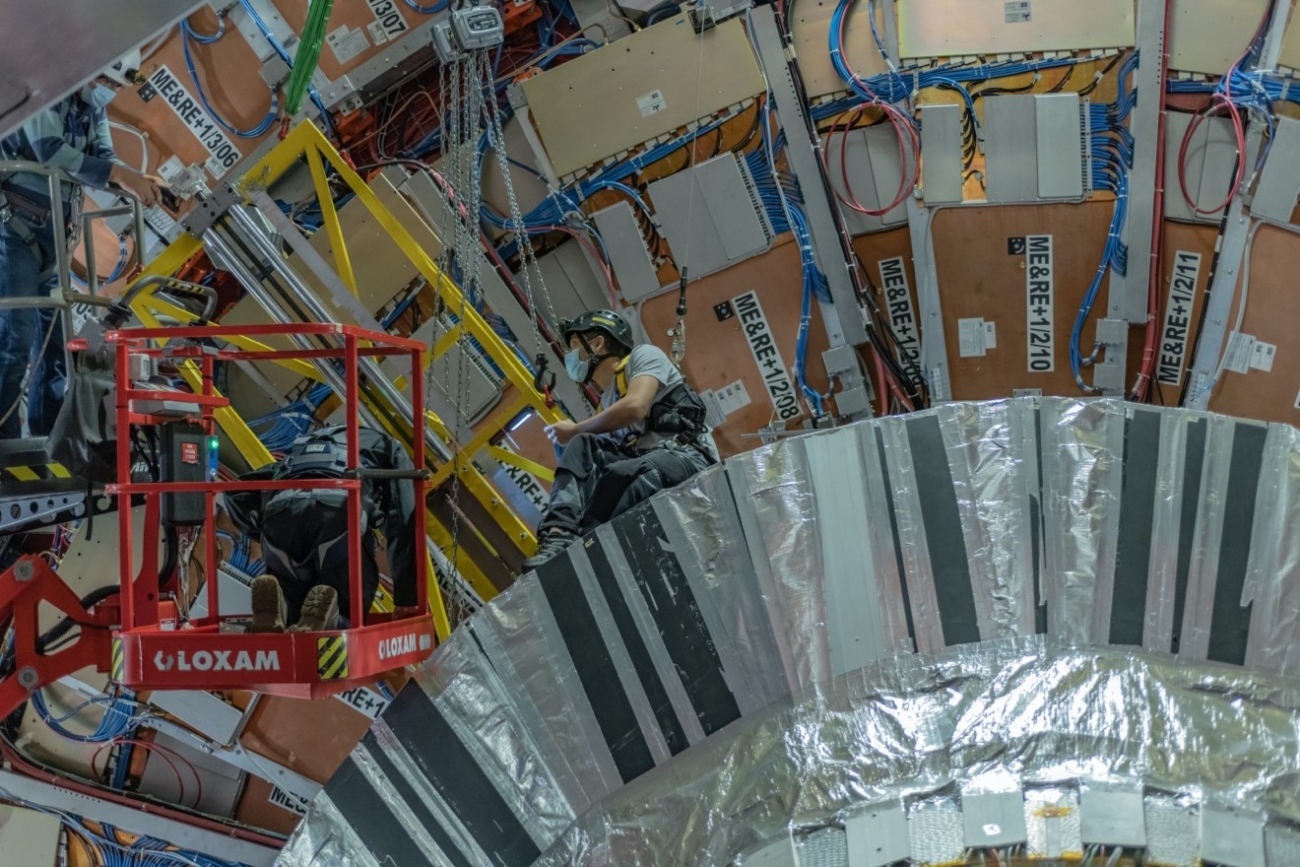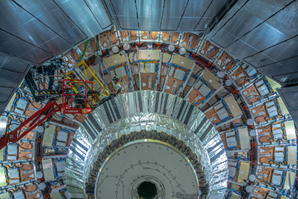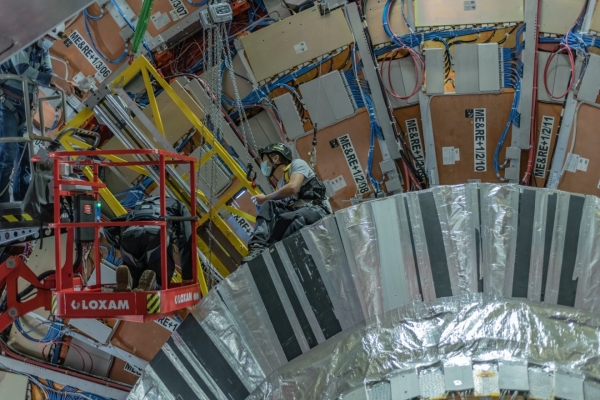CMS restarts and continues working under Covid-19 conditions

One of the major objectives of CMS for LS2 is an early phase-2 electronics upgrade of the Cathode Strip Chambers (CSC), located on all three endcap disks, and the installation of one layer of triple Gas Electron Multiplier Chambers (GEM) on the first endcap disk.
This work is organized in large workstreams, taking place on both ends of the detector in parallel. A repair and maintenance campaign is integrated into this work both for the barrel and the other endcap muon chambers, leading to a very dense highly choreographed work flow.
With the pandemic spreading and the shutdown of the experimental sites of CERN on the horizon, a large effort has been made to finish the third out of the 4 workstreams just before the closure of CMS on the 18th of March 2020. Directly after this date, an organized and safe restart was planned for as many activities as possible.
In October 2019, during a routine control of the CMS magnet, water was found in the oil of one of the vacuum diffusion pumps. Removing the pump made a warm-up of the magnet, necessary, an operation not originally foreseen for LS2. The warm-up of CMS’s superconducting magnet requires the application of a very low current in the coil, creating a magnetic field incompatible with any crane operation and most of the mechanical work.
The good news is that the warm-up operation itself requires very few people, thus allowing physical distance during the work. Therefore, together with the CMS safety team we developed a detailed plan, allowing to execute this work in the safest possible way given the Covid-19 restrictions. This included wearing of masks and face shields, wearing of gloves for operation of commonly used equipment, detailed disinfection plans and a consequent hand hygiene.
Following the approval of the CERN directorate, the warm-up started on April 20 long before resuming any other work package activities at PT5 and hence avoiding interference with any mechanical work. The warm-up ended a few days after the gradual re-opening of CERN started on May 18, proving that safe working at an experiment under Covid-19 conditions is sometimes uncomfortable and physically demanding, but possible. As CERN started exiting from safe mode during this summer, the work at PT5 and in all other laboratories and workshops used by CMS was gradually restarted. The work is organized in work-package, each of which was individually analyzed to define the necessary safety measures. In the same way all labs and workshops were inspected and prepared for work under these special conditions.
Part of this preparation was to define the maximum number of people that could access certain facilities, providing cleaning material for disinfecting hands, surfaces and tools. Many training sessions, mostly via video took place to raise the awareness and to train anybody working on site. After about six weeks all workplaces were re-opened and after about two months, with the lifting of most travel restrictions in Europe and many people returning, CMS reached high efficiency for the underground work progress while surface activities are also gearing up, thus moving back to efficiency comparable to pre-pandemic times .
Travelling from and to the United States is still impossible, thus impacting some of the upgrade projects, particularly since certain experts are needed to take care of the delicate work for the detector upgrade. Mitigation measures vary, from working from what one could call ‘heroic mode’ - mobilizing all available resources and experts on site - to remote video sessions offering guidance on specific operations that need to be followed. Moreover, with many countries reimposing travelling restrictions, a second challenge emerges for the CMS technical coordination. This is related to the external companies engaged in our upgrade facilities and the travel restrictions to their employees who presently can’t access CERN. Efforts are ongoing, together with the procurement service, to re-negotiate the use of local companies and workforce for some of these activities. Thanks to these efforts, it has been possible to partly compensate any working power loss caused by the new travel restrictions.
The 4th Muon workstream is meanwhile has well advanced and if things continue as planned, it will finish by the 4th of December. The last GEM chamber was installed on September 16 (Fig. 1), marking a major milestone for the CMS Phase 2 upgrade. In the remaining time, the chambers of the 4th CSC station have to be re-installed after being upgraded on the surface, the GEM system will be commissioned and some Resistive Plate Chambers (RPC) will undergo HV and gas leak repairs for reducing climate active gas emission. In parallel the program of exchanging for overhaul of all air-pads for moving the heavy endcap disks is expected to finish soon. After the end of the muon critical path, the closing mechanism of the Rotating Shielding (RS), located around the TASS area at the headwalls of the hall, will be consolidated to account for the reduced clearance which it will have with respect to the new beam pipe. In February 2021, the new phase 2 beam pipe will be installed, followed by the repaired and refurbished Pixel detector in May. Once these operations have been completed, the standard closing procedure of CMS will start and is expected to finish in August 2021, giving time for magnet tests that are absolutely indispensable after the upgrade of the CMS safety system with a free wheel thyristor.


Figure 1: Installation of the last GE1/1 chamber.
Based on the current plan, CMS will be ready for the foreseen test run of LHC by the end of September 2021. The remaining time, until the start of LHC’s Run 3 will be used to improve the shielding capacity of the RS.
